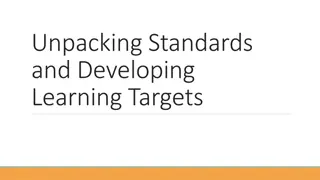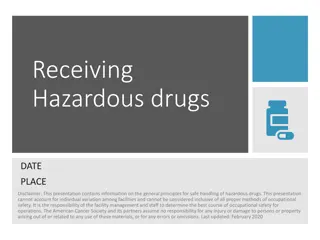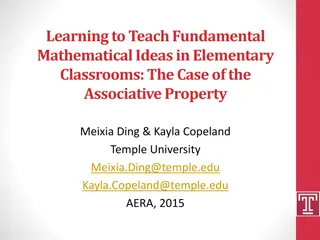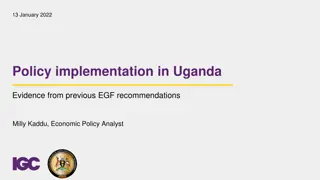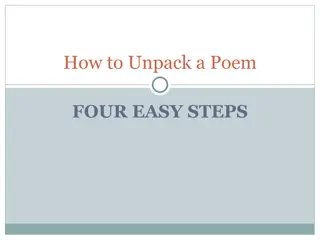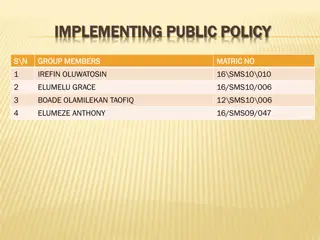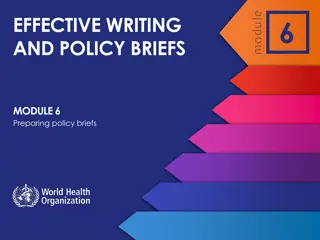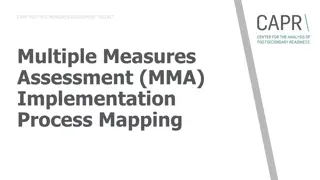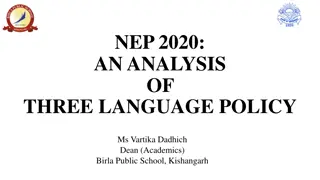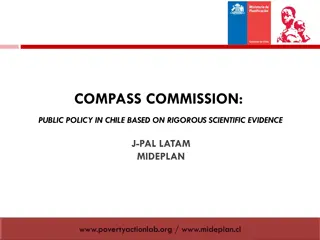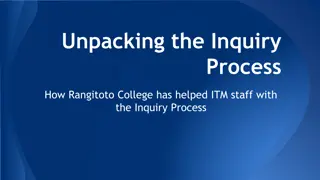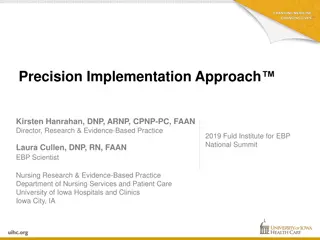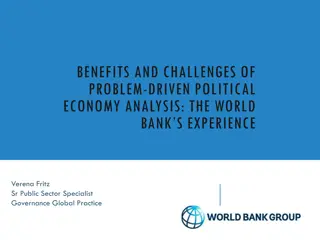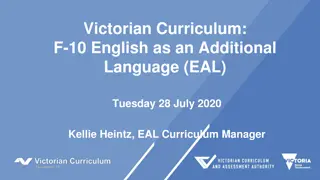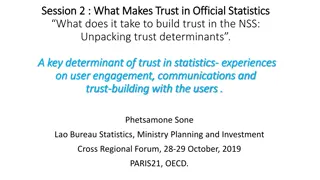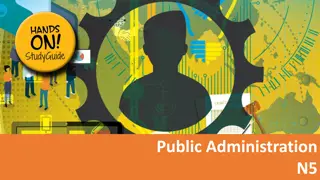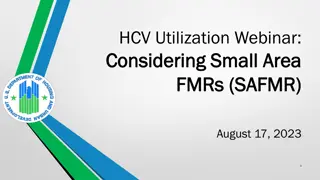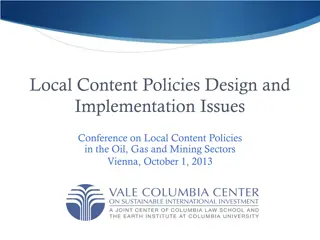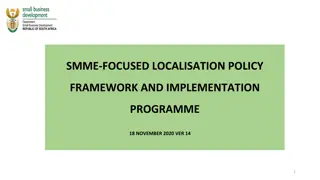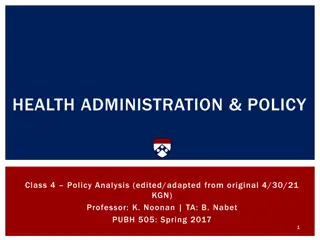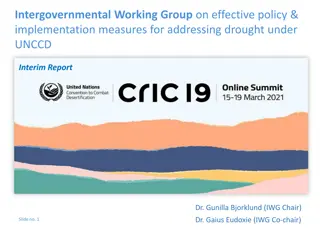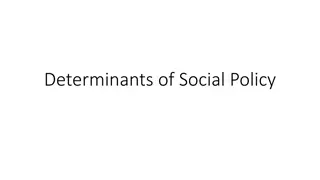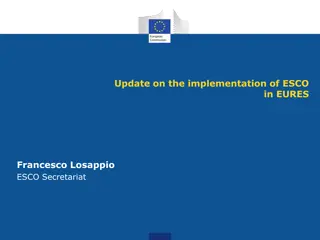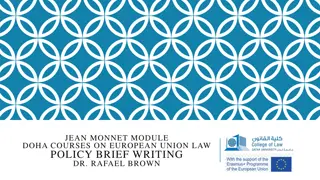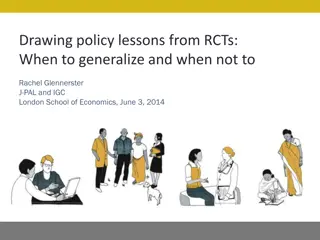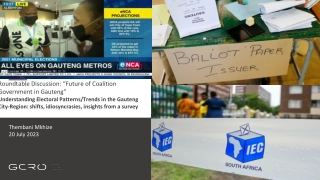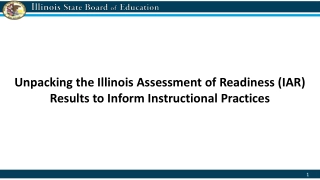Unpacking the RIA Process for Effective Policy Implementation
Delve deeper into the RIA process to understand its technical capacity and policy implications. This group exercise focuses on setting clear objectives, analyzing key policy issues, and creating a mock RIA process template tailored to the Indian context. Participants explore real-world problem-solving and tough policy questions to enhance their policy implementation skills.
Download Presentation

Please find below an Image/Link to download the presentation.
The content on the website is provided AS IS for your information and personal use only. It may not be sold, licensed, or shared on other websites without obtaining consent from the author. Download presentation by click this link. If you encounter any issues during the download, it is possible that the publisher has removed the file from their server.
E N D
Presentation Transcript
RIA in Practice: Group Exercise Dr. Malathy Knight Research Associate, Verite Research March 26th, 2015
Objective: unpacking the RIA process Delve deeper into particular element of RIA: the RIA process (vs. RIA document) Technical capacity (RIA document) necessary but not sufficient for effective, sustainable RIA Consistent/in sync with broader regulatory policy principles/framework Policy buy-in (political, stakeholder): #LK story on RIA vs plantations & telco privatization Real world problem-solving/asking the hard policy questions: most meaningful takeaway from this workshop
Group exercise: structure Setting out objectives, context, contours: 15 minutes Group work : 90 minutes Begin with 2 debating teams (45 minutes) Use the findings from debate for group presentation Group presentations: 15 minutes Suggested case study: focus on a sector currently topical to #India (financial, energy/utilities??) Use your own/collective experiences as policy implementers Interactive, problem-solving
Group exercise: some conceptual guidelines Clearly set out policy objectives Broad public policy/regulatory governance principles & objectives RIA-specific objectives (in chosen sector) Identify key policy issues/challenges w.r.t RIA process in chosen sector Unpack these policy issues (e.g. policy buy-in) looking to: Effectiveness Sustainability Going back to any other policy objectives identified above Ask the tough questions: is RIA useful in the first place? Why?
Group exercise: some conceptual guidelines Set out a workable mock RIA process template (what, why, how)for chosen sector: fit/integrate into India s public policy structures/processes (including legal traditions/dispute resolution) Some elements to consider (not exhaustive list; leave it to you the practitioners!) Political context (including politicians: bureaucrats principal-agent dynamics) Socio-economic context Governance culture (e.g. regulatory independence , RTI, civil society voice , culture of consultation) Mapping of key stakeholders Organizational set up (e.g. where in the policy chain should this entity be placed, financial & technical resources)
Discussion on RIA process: a quick review Systematic, structured, evidence-based, consultative analysis of the prospective impacts of a proposed policy measure against possible alternatives (ex-ante) ..RIA s most important contribution to the quality of decisions is not the precision of the calculations used, but the action of analyzing questioning, understanding real-world impacts and exploring assumptions.. (OECD, 2002) NOT an end itself; process matters (demonstration effects)
Discussion on RIA process: a quick review Sub-set of regulatory policy: effectiveness/efficiency, transparency/accountability, proportionality, consistency, legitimacy facilitating better governance structures and processes Two inter-linked elements: RIA process and RIA document
Discussion on RIA process: policy context Fits policy cycle Stakeholder buy-in & engagement Consistent analytical method Public consultation Iterative process
Discussion on RIA process: policy context Policy identification Policy Space Policy formulation Policy evaluation Policy implementation
Discussion on RIA process: policy context Setting agenda Enforcement Ex-post evaluation Ex-ante appraisal Monitoring Drafting rule/ Monitoring Final impact assessment regulation Implementation Implementation
Discussion on RIA process: policy space 1 Figure 2.1. The policy process: a schematic Environment Environment Environment Legend (b) (a) The political system Inputs Mediating variables Bi-directional flow Policy demands Interest groups/ Parties/ Organisations Policy outputs Policy outcomes The decision system Uni-directional flow Organisational network The political system black box The internal policy process Environment Environment Environment
Discussion on RIA process: policy space 1 Figure 2.2. Conceptualising North's theoretical framework: a schematic ORGANISATIONS E.g. The state, Executive, INSTITUTIONS Formal Rules E.g. Constitutions, Laws, Property rights (Contracts), Global governance mechanisms (donor conditionality, GATS commitments) Informal Norms E.g. Trust, Power, Rent- legislative & judicial arms of government, Regulatory agencies, Political parties, Interest groups, Donors INDIVIDUALS E.g. President of a country, Minister of Parliament, Justice of the Supreme Court, Chairperson of a regulatory agency, an individual citizen of a country seeking (corruption), Culture Legend Mutually re-enforcing feed-back loop
Discussion on RIA process: regulatory space Independent judiciary y n Unified government Inefficiencies, government ownership, international guarantees y n Parties alternate in government y n Legally binding contractual arrangements? Complex party decision making? Legally binding contractual arrangements? Specific process written in law or contract? n y y n n y Inefficiencies, government ownership, international guarantees Strong bureaucracy? Inefficiencies, government ownership, international guarantees Strong bureaucracy? n y y n Complex rules Simple rules Complex rules Simple rules


